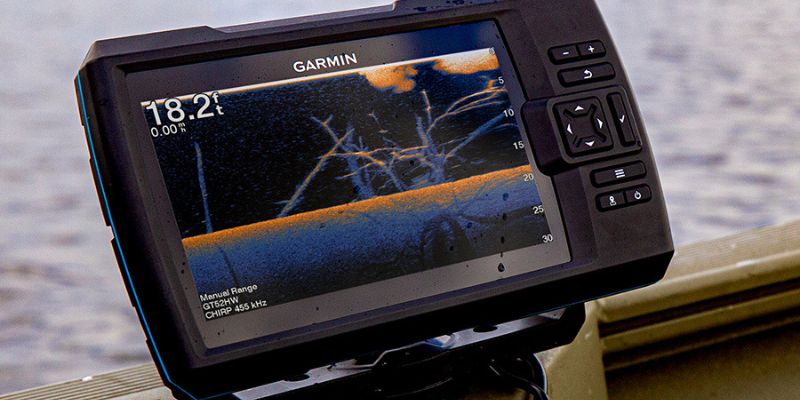Navigating the vast waters of the Florida coastline has always been a blend of art and science. With advancements in technology, marine navigation and fishing have seen significant improvements, making fishing and boating more efficient and enjoyable. Central to these advancements are two critical pieces of technology: fish finders and marine sonars systems
While they may seem similar at first glance, understanding their differences is crucial for effective navigation and fishing.
What is Sonar?
The History of Sonar Technology
Sonar, an acronym for Sound Navigation and Ranging, has a rich history that dates back to the early 20th century. Initially developed for military purposes during World War I, sonar technology has evolved significantly over the years, finding applications in various fields.
How Sonar Systems Work: Principles of Sound Waves and Echolocation
Sonar systems function by emitting sound waves underwater. These waves travel until they hit an object and then bounce back to the sonar unit. By calculating the time it takes for the sound waves to return, a sonar can determine the distance, size, and composition of objects underwater.
Different Types of Sonar
There are primarily two types of sonar: active and passive. Active sonar emits sound waves and listens for their echoes, while passive sonar listens for sounds made by other objects.
Raymarine Sonars vs. Garmin Sonars
Raymarine and Garmin are leading brands in marine electronics. Raymarine sonars are known for their high-resolution imaging and CHIRP technology, making them ideal for detailed seabed imaging. Garmin sonars, on the other hand, often feature Panoptix all-seeing sonar technology, offering real-time images of what’s around and beneath the boat.
Common Applications of Sonar
Beyond fishing, sonar is used in navigation, oceanography, and military applications. It aids in mapping the ocean floor, detecting other vessels, and in scientific research.
What is a Fish Finder?
Fish finders are specialized types of sonar systems specifically designed for locating fish. They have become an indispensable tool for both recreational and commercial fishermen.
How Fish Finders Work
Fish finders use sonar technology to detect underwater fish and terrain features. They display this information on a screen, helping anglers pinpoint fish locations.
Key Features of Fish Finders
Fish finders come with various features like different display types, frequencies, and transducers. High-frequency fish finders provide finer details, while low-frequency ones are better for deeper waters.
Garmin vs. Raymarine Fish Finders
Garmin fish finders often come with features like ClearVü scanning sonar for near-photographic images, while Raymarine fish finders boast DownVision technology for superior underwater imaging.
Typical Uses of Fish Finders
Fish finders are primarily used in recreational and commercial fishing to locate fish and understand underwater terrain.
Key Differences Between Fish Finder and Sonar Systems
Why Knowing the Difference Matters
Understanding the distinction between fish finders and sonar is essential for making informed decisions about marine equipment purchases.
Technology and Functionality
While both use sonar technology, fish finders are optimized for detecting fish, whereas marine sonars offer a broader range of functionalities, including navigation and seabed mapping.
Applications and User Groups
Fish finders are mainly used by anglers, while sonars systems cater to a wider audience, including researchers, navigators, and the military.
Display and Interpretation of Data
Fish finders typically have user-friendly displays showing fish icons, whereas sonars provide more detailed images and require interpretation.
Equipment and Installation Requirements
Fish finders are generally easier to install and use, while marine sonars might need more complex setup and calibration.
Accuracy and Depth Capabilities
Marine sonars usually offer greater depth capabilities and accuracy compared to fish finders.
Choosing the Right Tool for Your Boating Needs
Selecting Based on Specific Needs
Your choice between a fish finder and a sonar should be based on your specific activities. For instance, deep-sea fishing requires different functionalities than leisure boating. Influence of
Fishing and Boating Activities
Different types of fishing (e.g., ice fishing, sport fishing) and boating activities dictate whether a fish finder, a sonar, or both are necessary.
Price Ranges
Garmin and Raymarine fish finders and sonars come in various price ranges, catering to different budgets and needs.
Technical Expertise for Installation
While basic fish finders are relatively easy to install, more advanced sonars might require professional installation and calibration.
While fish finders and marine sonars share common roots in sonar technology, their functionalities, applications, and user interfaces differ significantly. Whether you’re an avid angler or a seasoned mariner, choosing the right tool – be it a Garmin fish finder, a Raymarine sonar, or any other brand.
J-TEK Marine Electronics, in Stuart, Florida, provides certified installation of Raymarine, Garmin Marine Electronics, Furuno, Simrad, and many other marine electronics. Whether updating your vessel with a retrofit or looking for a brand new installation, we’ll help you determine what best meets your boating and fishing requirements. Contact us for a free estimate.

